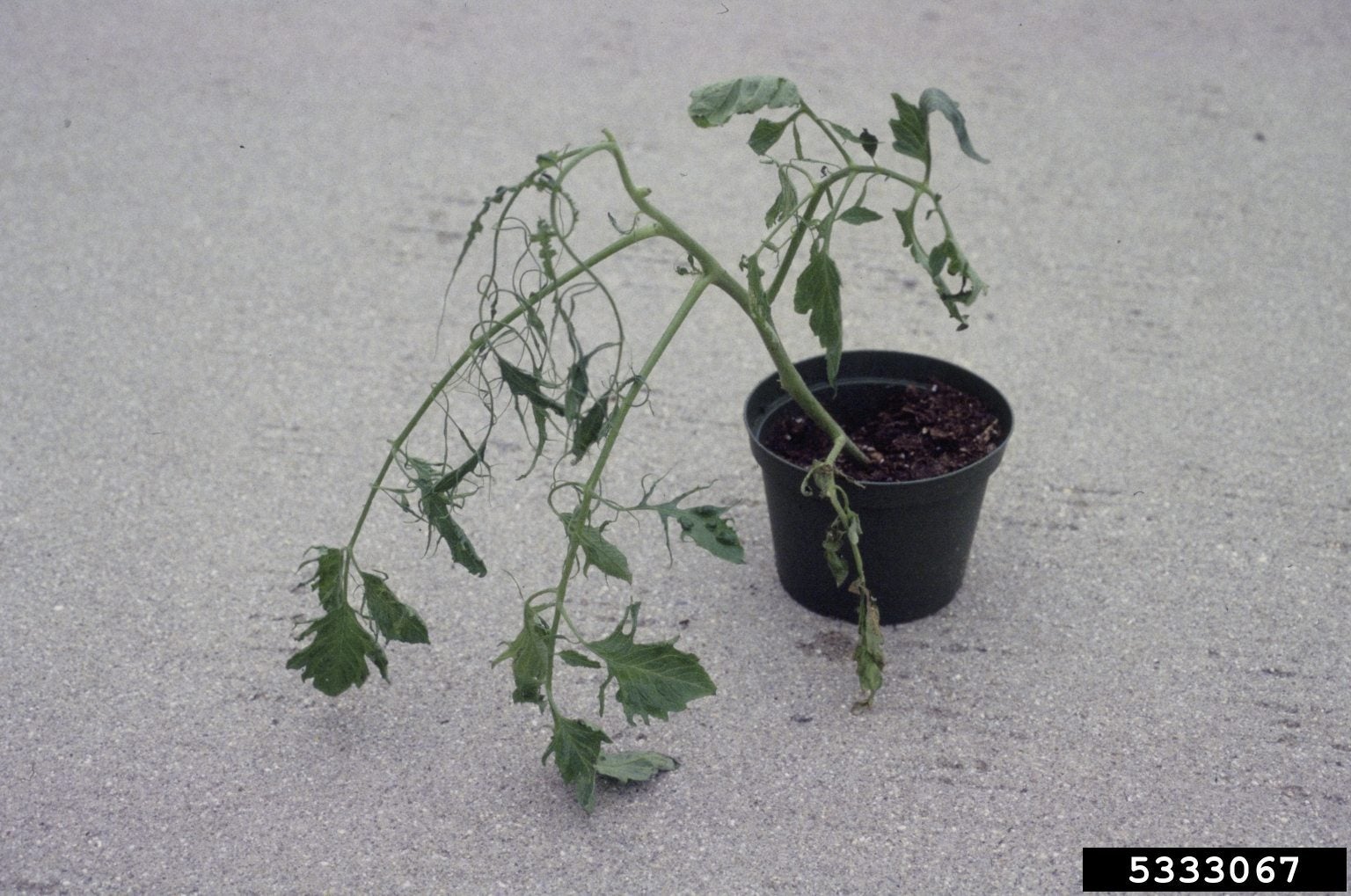Tomato Mosaic Virus Symptoms: Managing Tomato Mosaic Virus

Tomato mosaic virus is one of the oldest described plant viruses. It is extremely easily spread and can be devastating to crops. What is tomato mosaic virus and what causes tomato mosaic virus? Keep reading to learn more about tomato mosaic virus symptoms and tomato mosaic virus treatment.
What is Tomato Mosaic Virus?
Tomato mosaic virus is a serious and extremely contagious disease. It is also hard to identify, with symptoms varying wildly depending upon the variety and age of the infected plant, the strain of the virus, and environmental conditions. To make matters worse, it is very hard to distinguish from the closely related tobacco mosaic virus. Tomato mosaic virus symptoms can be found at any stage of growth and all parts of the plant may be infected. They are often seen as a general mottling or mosaic appearance on foliage. When the plant is severely affected, leaves may look akin to ferns with raised dark green regions. Leaves may also become stunted. Infected plants may have a severe reduction in fruit set and those that do set may be dotted with yellow blotches and necrotic spots while the interior of the fruit is brown. Stems, petioles, leaves, and fruit may all show signs of infection.
Tomato Mosaic vs. Tobacco Mosaic Virus
Tomato mosaic virus and tobacco mosaic virus are very closely related and very hard to distinguish from each other. They do differ genetically, but to the casual observer they are easiest to tell apart by their hosts of choice. Mosaic virus infects a large number of plants in addition to tomatoes. A few of the more common ones include:
Tomato mosaic is also known to infect apples, pears, and cherries. Tobacco mosaic will also infect tomato plants, but it has a much wider range, including lettuce, cucumbers, beets, and, of course, tobacco. Mosaic virus symptoms mimic those caused by other plant diseases as well as herbicide or air pollution damage and mineral deficiencies. While this viral disease rarely kills the plant, it lowers the quantity and quality of the fruit. So, what causes tomato mosaic virus and are there any methods for treating tomato mosaic virus?
Tomato Mosaic Virus Control
This viral disease is able to overwinter on perennial weeds and is then spread by several insects including aphids, leafhoppers, whiteflies, and cucumber beetles. Both cuttings and divisions from infected plants will be infected. The disease is spread into the plant via small wounds caused by mechanical injury, insect chewing, and grafting. Leftover plant debris is the most common contagion. Tomato mosaic virus of tomatoes can exist in the soil or plant debris for up to two years and can be spread just by touch – a gardener who touches or even brushes up against an infected plant can carry the infection for the rest of the day. You should wash your hands with soap and disinfect tools after handling tomato plants to keep the disease from spreading. Treating mosaic virus is difficult and there are no chemical controls like there are for fungal diseases, although some varieties of tomato are resistant to the disease, and seeds can be bought that are certified disease free. Sanitation is the most important application to practice when controlling tobacco mosaic virus. Tools should be boiled for five minutes and then washed with a strong detergent. Bleaching doesn’t work for viral decontamination. Destroy any seedlings that appear stunted or distorted and then decontaminate tools and hands. Keep the area around the tomatoes weeded and free of plant detritus to minimize areas the disease can harbor. Control insects as well to lessen the chances of contamination. If you spot the disease in your garden, you should immediately dig up and burn infected plants. Don’t plant tomatoes, cucumbers, or other plants that are susceptible to mosaic virus in that same area again.
Sign up for the Gardening Know How newsletter today and receive a free copy of our e-book "How to Grow Delicious Tomatoes".

Amy Grant has been gardening for 30 years and writing for 15. A professional chef and caterer, Amy's area of expertise is culinary gardening.
